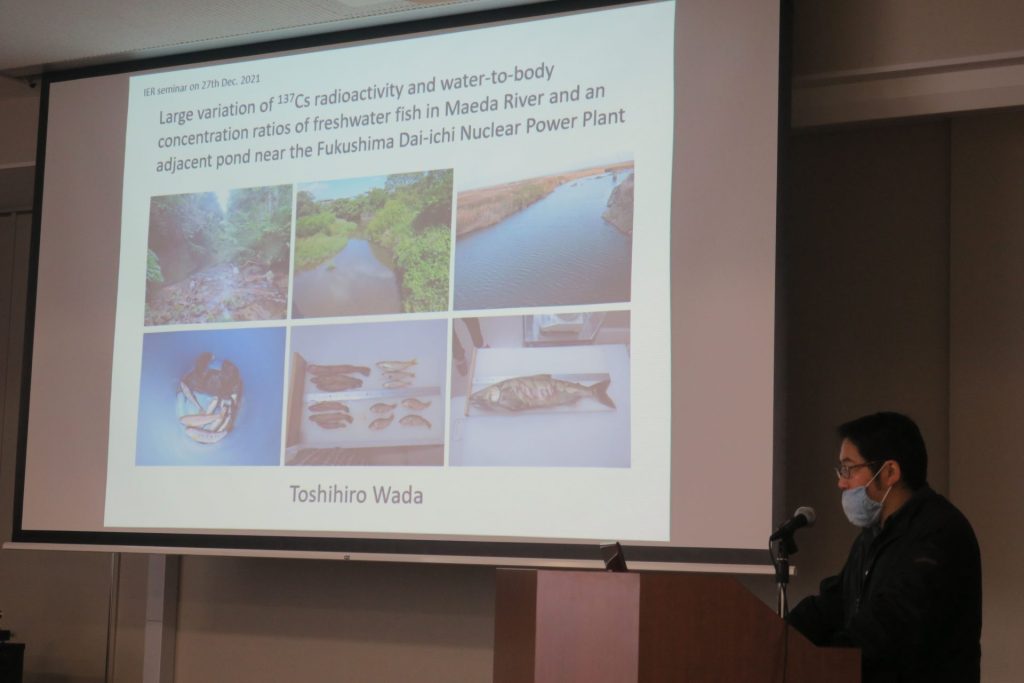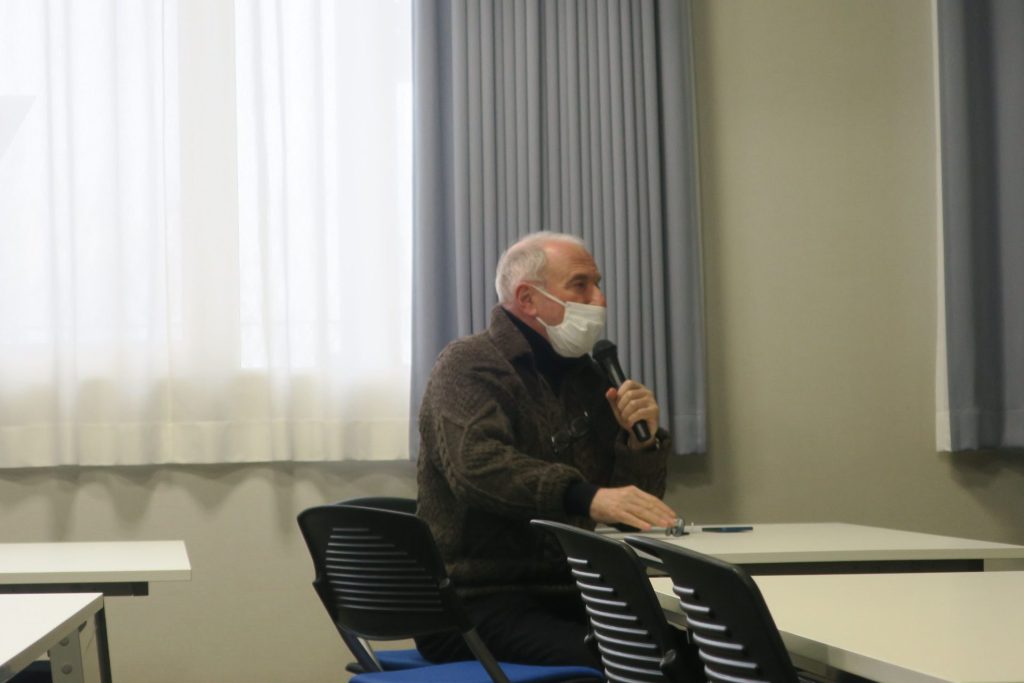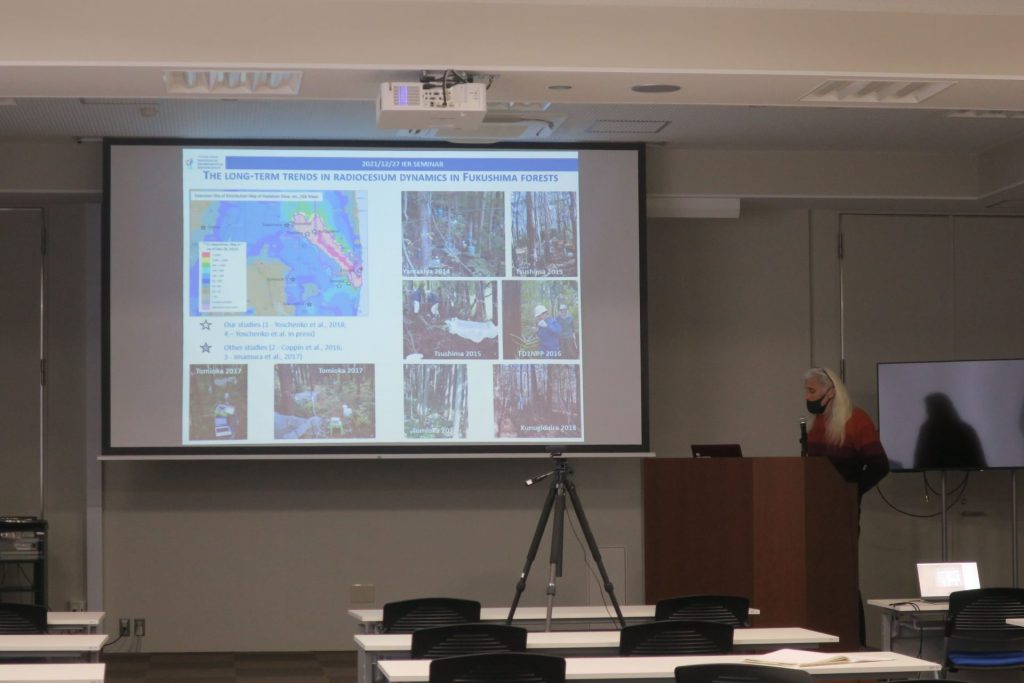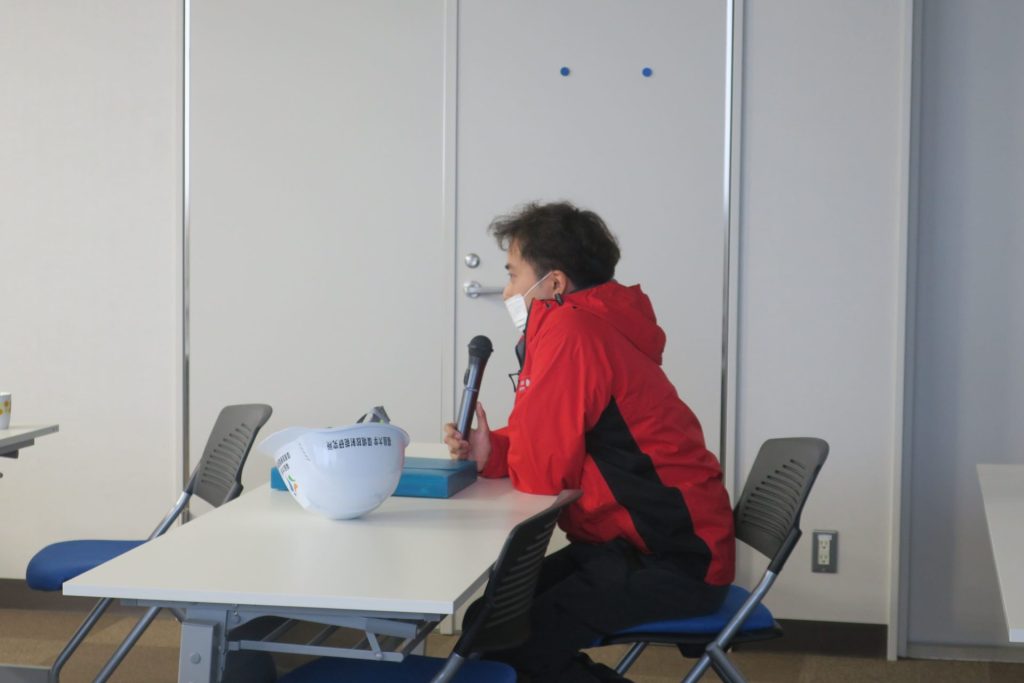December 27th, 2021 We held the 8th IER Seminar of FY2021
<Associate Professor WADA, Professor YOSCHENKO>
Date & Time
December 27th, 2021, 2:00 to 3:00 pm
Speaker
Associate Professor, Toshihiro WADA
Professor, Vasyl YOSCHENKO
(Presentation order)
Title
Large variation of 137Cs radioactivity and water-to-body concentration ratios of fish in Maeda River and an adjacent pond near the Fukushima Dai-ichi Nuclear Power Plant(WADA)
The long-term trends in Radiocesium Dynamics in Fukushima Forests.(YOSCHENKO)
Institute of Environmental Radioactivity (IER) regularly holds the IER seminar, in which the faculty members report on their research results, with the purpose of facilitating their research activities and communication.
At the 8th IER Seminar of FY2021 held on December 27, gave presentations on their research activities. The seminar was attended by 19 researchers and graduate students, including online attendees.
Associate Professor WADA presented the results of measuring the concentration of radiocesium in fish as well as in river and pond water (environmental water), collected from the Maeda River (five sampling sites from upstream to downstream areas) and an adjacent pond around the Fukushima Daiichi Nuclear Power Plant (FDNPP), showing a large variation in the concentration ratio of Japanese dace to environmental water. In contrast, the variability of the concentration ratios of pond fish was smaller than those found in river fish including Japanese dace. Comparing the effects of the Chernobyl accident and the FDNPP accident, it was found that the cesium-137 accumulation mechanisms observed in fish in lakes and ponds were similar, but in rivers, the cesium-137 accumulation mechanisms specific to Fukushima strongly affected the contamination levels of river fish.
Professor YOSCHENKO presented his research results on the long-term trends in Radiocesium Dynamics in Fukushima Forests since 2014, when he started his research. The amount of radiocesium has decreased significantly in the litter layer of the forest soil, but up to 80% of it is still localized in the 5 cm topsoil layer. The downward migration of radiocesium is slow, but the dynamics of its bioavailable forms in the root-inhabited soil layer should be noted. He also discussed the difference in the dynamics trends of radiocesium in the biomass compartments. In particular, in contrast to other tree species, Japanese cedar and Japanese cypress accumulate radiocesium in heartwood. Also, the dynamics trends may differ between the trees of the same species growing at different sites. The mechanisms that determine such differences and the site-specific parameters that determine the magnitude of the radiocesium root uptake into the biomass compartments need to be clarified.
After the presentations, various questions and opinions were exchanged with each presenter.




